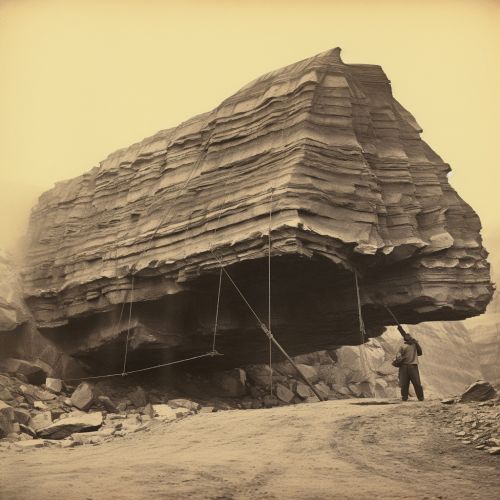Nappe
Definition
A Nappe is a term used in the field of geology and hydrology to describe a large, sheet-like body of rock that has been moved more than 2 km or 1.2 mi above a thrust fault from its original position. Nappes form in compressional tectonic settings like continental collision zones or on the overriding plate in active subduction zones. Nappes are a type of large-scale fold and are indicators of episodes of compressional tectonics.
Formation
Nappes form as a result of tectonic forces, specifically horizontal compressional forces. The intense pressure and high temperatures associated with these forces can cause the rock layers to fold, break, or slide, resulting in the formation of a nappe. The process of nappe formation involves the deformation of stratified rock, typically under the influence of regional, rather than local, tectonic forces. The rocks involved in the formation of nappes can be sedimentary, metamorphic, or igneous.


Types of Nappes
There are two main types of nappes:
- Gravity nappes (also known as gliding nappes), which form due to the force of gravity. These nappes are typically formed in areas with a steep slope, where the overlying rock layers slide over the underlying layers due to the force of gravity.
- Thrust nappes (also known as thrust faults), which form due to horizontal compressional forces. These nappes are typically formed in areas where tectonic forces cause the overlying rock layers to be pushed over the underlying layers.
Examples of Nappes
There are several well-known examples of nappes around the world. These include:
- The Moine Thrust in Scotland, which is one of the earliest discovered and most studied nappes.
- The Lewis Overthrust in Montana, USA, which is another well-studied nappe that provides a clear example of thrust faulting.
- The Himalayan Nappes in Asia, which are some of the highest and most extensive nappes in the world.
Importance of Nappes in Geological Studies
Nappes are of significant importance in geological studies as they provide valuable information about the tectonic history of an area. The study of nappes can reveal information about the forces that have shaped the Earth's crust in a particular region, the sequence of events that have occurred during the formation of a mountain range, and the conditions under which different types of rocks have formed. Furthermore, the study of nappes can also provide insights into the processes of deformation and metamorphism.
